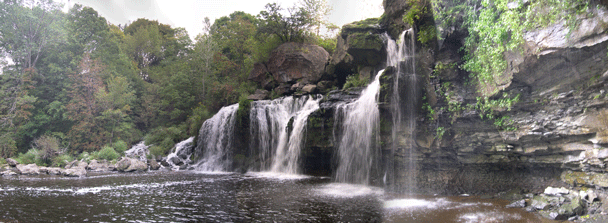Software for photo editing and management
Apple's iPhoto was used for creating all the photo galleries hosted on this site. See Breakneck Point, for example. iPhoto comes installed on all modern Macintosh computers. To create these galleries, select 'Export' from the 'Share' menu. Save an album as a web page and save it to your web site.
Panoramas were created using Adobe's Photoshop Elements (version 4.0 for the Mac OSX). To create images like the one at the top of this page, select 'New' from the 'File' menu and then select 'Photomerge Panorama.' Of course, you will first need a set of photographs to merge together. The panoramas included on this site at this writing (October of 2006) are far from perfect. The camera was almost always hand held and exposures were done automatically.
Gimp is freeware for photo manipulation.
iPhoto also allows you to take photo albums in your pocket (on an iPod). See below.
Flickr, described above, allows for storing, sharing and sorting digital photographs.
For the future?
Quicktime VR Panoramas offer exciting potential. See some created by others not associated with the project:
http://www.learningtoflyoriginals.com/panorama.html Scroll down to find Taughannock Falls.
http://www.hudsonriver.com/panoramas/breaknec.htm. For other panoramas, remove the text after the last '/'. (This is often an effective strategy for finding more material like whatever page you are visiting).

